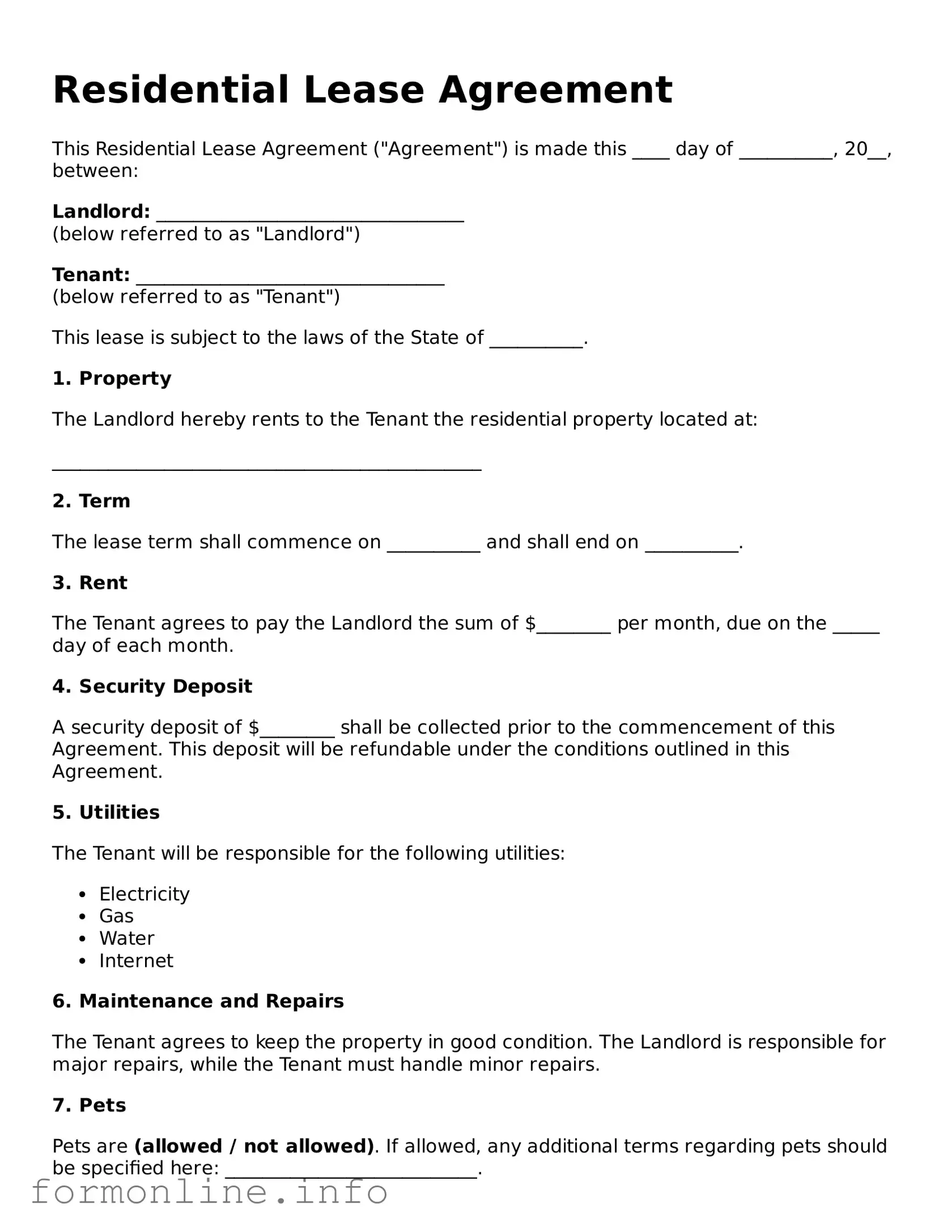Residential Lease Agreement
This Residential Lease Agreement ("Agreement") is made this ____ day of __________, 20__, between:
Landlord: _________________________________
(below referred to as "Landlord")
Tenant: _________________________________
(below referred to as "Tenant")
This lease is subject to the laws of the State of __________.
1. Property
The Landlord hereby rents to the Tenant the residential property located at:
______________________________________________
2. Term
The lease term shall commence on __________ and shall end on __________.
3. Rent
The Tenant agrees to pay the Landlord the sum of $________ per month, due on the _____ day of each month.
4. Security Deposit
A security deposit of $________ shall be collected prior to the commencement of this Agreement. This deposit will be refundable under the conditions outlined in this Agreement.
5. Utilities
The Tenant will be responsible for the following utilities:
- Electricity
- Gas
- Water
- Internet
6. Maintenance and Repairs
The Tenant agrees to keep the property in good condition. The Landlord is responsible for major repairs, while the Tenant must handle minor repairs.
7. Pets
Pets are (allowed / not allowed). If allowed, any additional terms regarding pets should be specified here: ___________________________.
8. Termination
Either party may terminate this Agreement with _____ days' written notice, specifying the termination date.
9. Governing Law
This Agreement shall be governed by the laws of the State of __________.
10. Signatures
By signing below, both parties agree to the terms and conditions of this Residential Lease Agreement.
_______________________________ ____________
(Landlord Signature) (Date)
_______________________________ ____________
(Tenant Signature) (Date)
